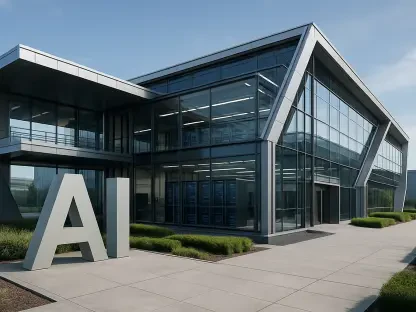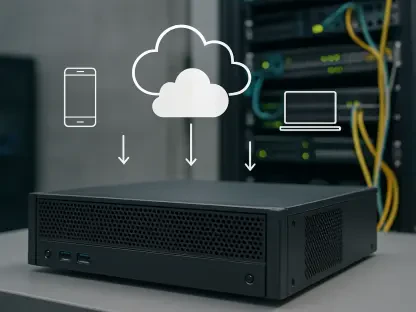In the aftermath of recent wildfires in Los Angeles County, attention has shifted towards addressing the lingering effects on air quality and public health. The UCLA-led Community Action Project Los Angeles Air (CAP AIR) has emerged as a crucial initiative, providing a framework to tackle these challenges head-on. By deploying a state-of-the-art air quality monitoring network, the project offers critical insights that can aid communities in their recovery from devastating fires like the Palisades incident. At the heart of this effort is the establishment of 20 monitoring stations distributed strategically across regions like Pacific Palisades, Malibu, and Santa Monica. These stations are distinct in their ability to measure both fine particles, known for their propensity to penetrate deep into the lungs, and larger PM 10 particles, which are especially prevalent during the construction and debris removal phases post-fire.
The air pollution data gathered from the sensors is readily available to the public through an intuitive online dashboard. This platform classifies the air quality levels using a color-coded system, providing an accessible way for residents to gauge the safety of their environment. Such transparency equips local communities with the knowledge to make informed decisions about outdoor activities, especially when the air quality shifts from good to hazardous. The commitment to maintaining public health is underscored by the project’s collaborative support, prominently funded by nonprofit entities like the R&S Kayne Foundation and the Danhakl Family Foundation. These organizations highlight a collective commitment to ensuring the well-being of vulnerable groups, such as children and patients with pre-existing conditions. With an innovative approach that bridges advanced technology with community collaboration, the CAP AIR project stands as a pioneering effort to address post-fire air quality concerns in Los Angeles County.
Integrating Advanced Technology in Air Quality Monitoring
The CAP AIR initiative represents a significant advancement in the realm of environmental monitoring, particularly in response to the increased threats posed by wildfires. Its dual focus on fine and coarse particulate matters sets it apart from conventional monitoring systems, filling a crucial gap in data collection. Fine particles, often denoted as PM 2.5, are particularly harmful due to their ability to reach deep into the respiratory tract. Meanwhile, PM 10 particles, less discussed but equally detrimental, pose immediate threats as they are frequently kicked up during post-fire reconstruction efforts. The innovative nature of this project lies in its ability to provide real-time data, offering immediate insights into air quality fluctuations that can influence health advisories and public safety protocols.
The deployment of these advanced monitoring stations around key areas of Los Angeles is strategic, ensuring that the most affected communities receive timely information. Such a localized approach not only empowers residents with detailed air quality reports but also assists public health officials in pinpointing pollution hotspots. By having real-time access to data on pollutant levels, authorities can issue more precise health warnings and tailor their responses to the specific needs of each community. This integration of technology and real-time feedback is at the core of CAP AIR, enabling the city to adapt its public health responses dynamically and effectively in the face of evolving environmental challenges.
Community Involvement and Long-term Resilience
The success of the CAP AIR project is as much about technology as it is about community engagement and empowerment. By giving residents the tools and information they need, the initiative fosters a sense of collective responsibility and action. The inclusion of an online dashboard that is publicly accessible ensures that all members of the community can engage with the data, encouraging an informed populace that can advocate for necessary changes or interventions. This transparency is essential not only for immediate recovery but also for instilling a culture of awareness and preparedness.
Beyond immediate health implications, the long-term objective of CAP AIR is to build resilience against future wildfire events. Los Angeles County, with its history of susceptibility to fires, needs ongoing strategies that anticipate air quality issues rather than react to them. Through educational outreach and community workshops, the project aims to bolster understanding of pollution sources and their health impacts. This proactive stance fosters a culture where air quality monitoring becomes an integral part of everyday life, preparing both officials and citizens for any eventualities that arise from environmental changes. The collaboration between technological advancement and community empowerment suggests a paradigm where environmental monitoring evolves into a cornerstone of public health strategy in fire-prone regions.
Envisioning Future Solutions for Air Quality Challenges
In response to recent Los Angeles County wildfires, efforts have focused on air quality and public health. The UCLA-led Community Action Project Los Angeles Air (CAP AIR) is pivotal in tackling these issues. Utilizing cutting-edge technology, CAP AIR employs a sophisticated air quality monitoring system to offer valuable insights, aiding areas recovering from devastating fires like the Palisades. Central to this initiative is the deployment of 20 strategically placed monitoring stations in locations such as Pacific Palisades, Malibu, and Santa Monica. These stations measure fine particles, which penetrate deeply into lungs, and larger PM 10 particles, common during post-fire cleanup. Data from these sensors is publicly accessible via a user-friendly online dashboard featuring a color-coded air quality system, helping residents assess environmental safety. Funded by nonprofits like the R&S Kayne Foundation and Danhakl Family Foundation, CAP AIR prioritizes public health, particularly protecting vulnerable groups. This innovative approach marries technology and community cooperation.








